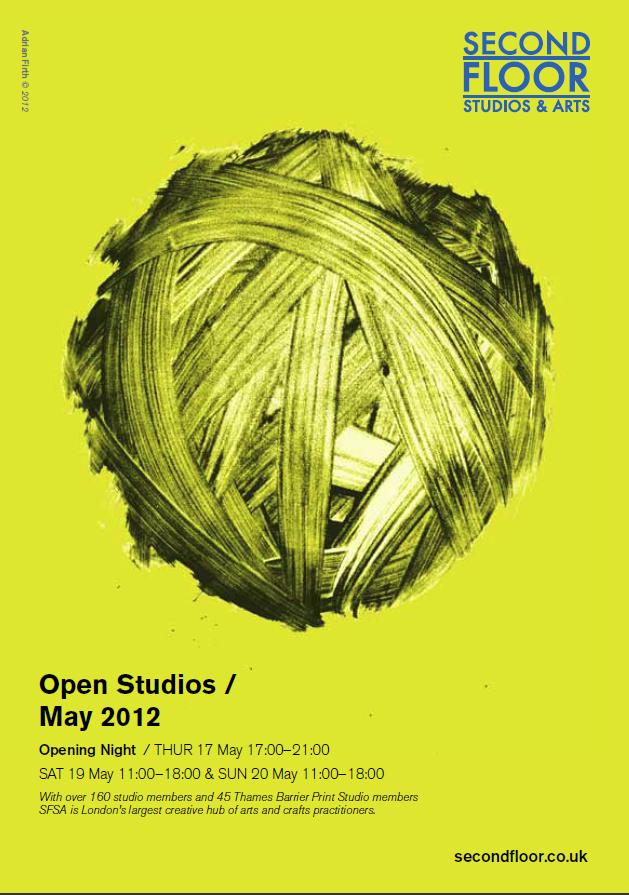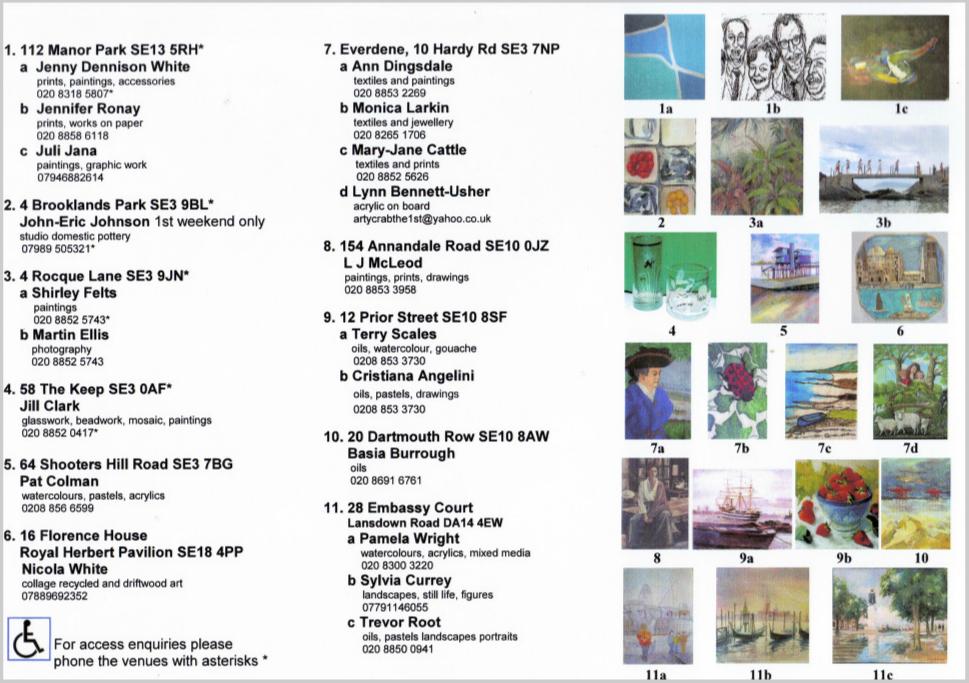
From time to time I receive e-mails with questions about Shooters Hill local history. Often these are from other countries, such as a question about dairies in Shooters Hill from someone in Australia. Another e-mail from Australia, from Lorraine McBride, was a question about the painting shown above of Shooters Hill School in about 1875. Lorraine wondered if I knew anything about the school, and whether it was still standing. She said that she knew nothing about the painting, or how it made its way to Australia.
It’s a puzzling picture. It doesn’t look like any of the schools around Shooters Hill today, certainly not Christ Church or Eglinton Road or the Post-16 Campus which used to be Shooters Hill Grammar School. The pond is particularly puzzling. The only possibility, it seemed to me, was that this was a painting of Wickham House at the back of the old Bull where the Rev. Thomas James Dallin ran an academy for gentlemen. The pond would have had to be the Eaglesfield Park Lilly Pond. This wasn’t a very satisfactory solution as none of the old OS maps of Shooters Hill showed both the pond and Wickham House at the same time. Also the dates didn’t quite fit: the Rev. Thomas James Dallin was the first vicar at Christ Church from 1856 until his death in 1865, ten years before the painting’s date.
The answer was in the Greenwich Heritage Centre. David Lloyd Bathe’s “Steeped in History” includes the photograph below, which is very clearly the same building as in the water colour: the chimneys and widows are quite distinctive, as is the pond at the front.
Steeped in History has this to say about the building:
Woodcot
Up until 1875 the area by the water tower was known as Woodcot complete with its surrounding gardens. The house was said to be constructed from large sawn timbers obtained from local woods. It had a pond which measured 150ft by 90ft fed from a local spring and was used in severe winters for skating. The east facing house was built before 1745 and was demolished in 1875. For many years it was occupied by the artist W. Earl who with his wife oversaw a school for young ladies.
When the house was pulled down in 1875 two cottages were built just north of the water tower, they were known as 1 and 2 Woodcot Cottages. The pond remained until 1906 when it was filled in and six semi-detached villas were built, Ardmore, Eridge, Hammerwood, St Ives, St Denys and The Crest by Mr. Hutchings.
So the School in the painting was a school for young ladies run by W.Earl and his wife. W. Earl’s full name was William Robert Earl.

The Greenwich Heritage Centre folder about William Robert Earl contains an exchange of letters in 1979 between William’s great grand-daughter, Mrs. Patricia Glasgow, and the Greenwich local history library which was then at Woodlands House. Mrs. Glasgow lived in New Zealand to where her grandfather Albert, one of William Earl’s sons, had migrated in 1857. It reveals that the school was run by William’s wife Ann with the aid of a governess and that there were an average of 10 pupils.
Mrs. Glasgow’s letter also says a little about William’s career as a painter:
My great grandfather was a prolific painter; I received a letter from the librarian of the Royal Academy of Arts with a list of 19 paintings they exhibited between 1823 and 1854, and she also mentioned that over 50 works were shown by the British Institution and that he was a frequent exhibitor at the Royal Society of British Artists.
Here is Mrs. Glasgow’s list of William Robert Earl’s paintings that were exhibited by the Royal Academy:
1823 View near Chichester
1824 View on the coast of Sussex
1825 View at the back of the Isle of Wight, View from Green Hill, Evesham, Worcestershire
1826 A scene on the coast, Scene at St Cross, Isle of Wight, Scene at Charlton Forest, Sussex
1827 View in the New Forest near Lyndhurst, with figures, The fisherman’s fortunate haul and lucky return
1828 Waterfall and figures
1829 Coast Scene
1831 View near Eltham, Kent
1845 Fishing boats on the beach, Hastings, Sussex, Fishing boats landing, Hastings, Sussex
1848 Shrimping and wildfowl shooting between Hastings and Rye
1850 A wreck off the castle, Scarborough, Landscape, evening
1852 The morning after the wreck of the “City of Bristol” near Warms Head, South Wales
1854 Fishermen leaving home
Mrs. Glasgow also sent a colour photo of one of William’s paintings, Sheep Washing in Eltham Lane, which was owned by a cousin; I’ve included a scan of it below. Two more of William’s paintings are shown on the BBC Your Paintings web site.
Mrs Glasgow provides a link between William Robert Earl in Shooters Hill and the Southern hemisphere. Another is mentioned in an article in the March 2002 issue of the North West Kent Family History Society‘s journal by John Orbell, a great grandson of William Robert Earl. He had discovered a distant relative in Australia, but didn’t give any details. John also found an entry about William in the Dictionary of Victorian Painters by C. Wood:
EARL, William Robert, flourished between 1823-6 7, Coastal views in England, Scotland, Belgium & Germany. Exhibited 114 works, 19 at Royal Academy, 52 at British Institution (1806-67), 43 at Society of British Artists (founded 1823); London landscape painter. Exhibited at RA 1823-1854, but more frequently at BI & SBA, Suffolk Street. Subjects mainly views of Sussex, the Isle of Wight, and other places on the English coast. Also travelled in Germany and along the Rhine.
William lived in Shooters Hill until his death at Glengall Cottage on 10th June 1880.
Could William have painted the water colour of Woodcot? It’s difficult to say. Lorraine removed the painting from its frame to check for a signature with no luck. On the back of the painting there are two lines of indistinct text. The top one is the title and the second is:
‘…. ….. Bess (B.l.. .y…. dam) …ut about 1875’
The dots indicate undecipherable letters and Lorraine was not 100% sure about the letters in red. Any suggestions about the water colour’s painter would be very welcome.

The cottages and houses mentioned by David Lloyd Bathe that replaced Woodcot are still there, shown in the photographs below. The original Woodcot and its pond occupied all of the area between the short part of Cleanthus Road and Eaglesfield Road, with the house itself at the western end of the plot facing east. The water tower which now takes up part of that land wasn’t built until 1910; looking at the position of Woodcot on old maps the tower is positioned at the left hand end of Woodcot in the photograph at the top. The name “The Crest” can still be seen on the semi-detached villa closest to the water tower and “Eridge” on the one second furthest away. Colonel Bagnold says that the photograph of Woodcot was taken by “Miss Carter, at one time resident of Summer Court”. It would have been taken from roughly where Eaglesfield Road is now. The Colonel also says that the spring that fed the pond still existed (at the time he was writing) in the garden of the house called Hammerwood.
A partial solution to Lorraine’s picture puzzle, though not yet the complete answer. But it did reveal some interesting local history.




















